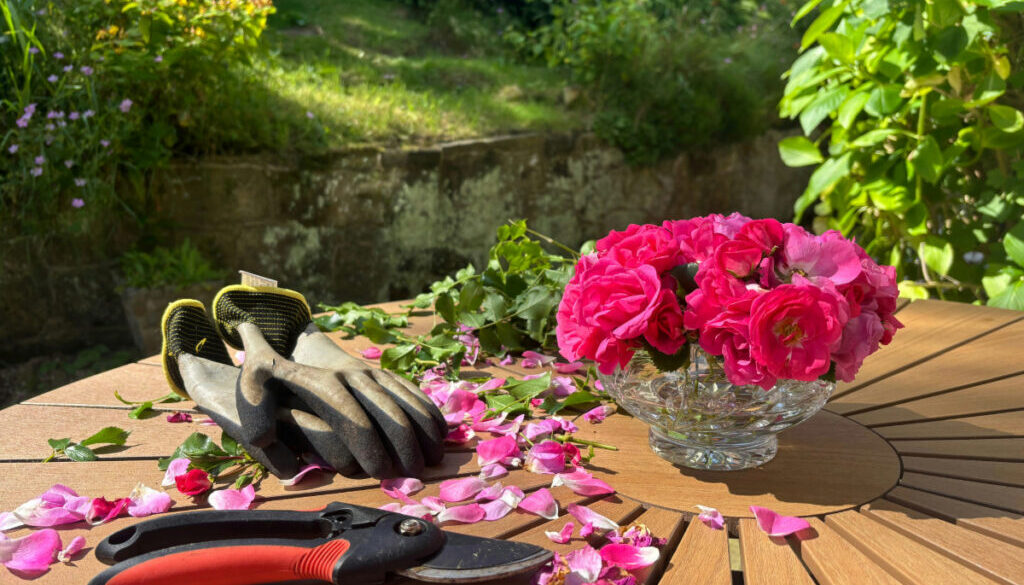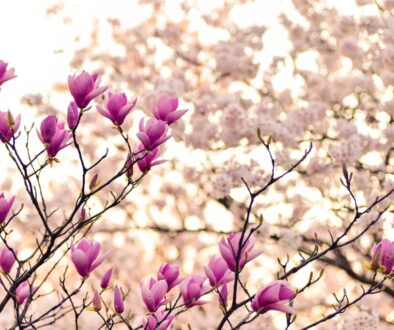Seasonal Pruning Tips for a Healthier Garden
Winter Pruning for Fruit Trees and Shrubs: A Simple Guide
When winter rolls around, and your garden goes into hibernation, it’s easy to think there’s nothing to do. But winter is the perfect time to grab your pruning shears and give your fruit trees and shrubs a little TLC. Pruning during the colder months helps shape your plants, promote healthy growth, and improve fruit production when spring finally arrives. Plus, with no leaves in the way, you can easily see what needs trimming. Let’s dive into how to make the most of winter pruning!
Why Winter Is Perfect for Pruning
Winter is a gardener’s secret weapon for pruning because your fruit trees and shrubs are dormant. This means the plants are essentially “asleep” and less likely to suffer from stress or shock after a good trim. Think of it as giving your garden a fresh haircut during its downtime — setting it up to look fabulous when spring rolls around.
Pruning in winter also reduces the risk of diseases spreading because there are fewer active pests and pathogens. With no sap flowing or buds to protect, your cuts will heal nicely without unwanted visitors causing trouble. And don’t worry if it feels like you’re cutting too much — trees and shrubs are tougher than they look!
How to Prune Fruit Trees in Winter
Start by identifying the key branches that need attention. Look for any dead, damaged, or diseased wood. These branches are your first targets because they’re not helping the tree and could spread problems if left unchecked. Snip them off cleanly at the base using sharp, sterilized tools.
Next, focus on crossing branches that rub against each other. These can cause wounds that make the tree vulnerable to infections. Trim one of the crossing branches to prevent friction and give the remaining branch more room to grow. Don’t forget to step back occasionally to check the overall shape of the tree — you’re aiming for a balanced, open structure that lets sunlight reach every part of the plant.
For fruit trees like apples and pears, aim for a goblet shape. This means keeping the center of the tree open and encouraging outward growth. It may feel counterintuitive to cut back healthy-looking branches, but this shape improves air circulation and light penetration, which leads to juicier, healthier fruit.
Tips for Shrubs: Less Is More
Shrubs are a little different from trees when it comes to winter pruning. With shrubs, less is often more. Start by removing any dead or damaged stems. If the shrub looks crowded, thin out some of the oldest stems at the base to encourage new growth in the spring.
For flowering shrubs like currants or gooseberries, be mindful of where the flowers grow. Some shrubs bloom on old wood, meaning stems from the previous year, while others bloom on new wood that grows in the coming season. Knowing this will help you avoid accidentally cutting off future flowers. When in doubt, prune lightly and take your time.
One trick to remember is to prune just above a healthy bud or node. This ensures the plant grows in the right direction and prevents awkward or weak growth patterns. Don’t forget to clear away any clippings from the base of the shrub to keep things tidy and reduce the chance of pests setting up camp.
A Few Handy Pruning Do’s and Don’ts
Do: Use sharp, clean tools to make precise cuts that heal quickly. Dull tools can tear branches, making them vulnerable to disease.
Don’t: Prune in freezing temperatures. Wait for a dry, mild day so the cuts don’t freeze and crack.
Do: Step back often to assess your work. It’s easy to get carried away when you’re up close.
Don’t: Prune too late in the season. If you wait until spring, you risk removing buds that are ready to bloom.
Spring Trimming to Shape Flowering Plants: A Bloom Boosting Guide
Ah, spring! The birds are chirping, the sun is shining, and your flowering plants are ready for their time to shine. But before they burst into a glorious display of blooms, a little spring trimming is just what they need to thrive. Shaping your plants now not only makes them look neat but also encourages healthier growth and more flowers. Let’s dig into how to give your plants the perfect spring makeover!
Why Spring Trimming Matters
Spring is the ideal time to trim your flowering plants because it’s when they’re gearing up for a season of growth. Trimming away dead or damaged parts makes room for new, healthy shoots to emerge. It’s like a fresh start for your plants, clearing out the old to make way for the new.
When you shape your plants in spring, you’re also giving them a head start on producing flowers. Many flowering plants put their energy into growing in all directions, which can leave them looking unruly. Trimming helps channel that energy into creating more blooms and stronger stems. Plus, who doesn’t love a tidy garden that looks like it belongs in a magazine?
Where to Begin: Tools and Techniques
Before you start trimming, make sure your tools are ready for action. Sharp, clean pruning shears are your best friend. Dull tools can damage stems, making it harder for your plants to recover. Give your shears a quick clean with rubbing alcohol to prevent the spreading of any diseases.
Start by removing anything dead, damaged, or diseased. These are the parts of the plant that won’t grow back and can harbor pests or fungi. Snip them off close to the base, but don’t cut into healthy wood.
Next, look for branches that are crossing or growing inward. These can block sunlight and air circulation, which are essential for healthy plants. Trim these back to encourage outward growth and create a more open shape. And don’t forget to step back every now and then to check your work. Shaping a plant is like sculpting — you need perspective to get it right!
Shaping Different Types of Flowering Plants
Not all flowering plants are created equal, and your trimming approach should match their needs. Let’s break it down:
Perennials: These plants come back year after year, so trimming them properly in spring is essential. Cut back any old stems left over from winter to about an inch above the ground. This clears the way for fresh growth and ensures your plant looks tidy and vibrant.
Shrubs: Flowering shrubs like hydrangeas and lilacs need a bit more attention. For shrubs that bloom on old wood, like lilacs, trim them lightly to shape but avoid cutting off too much. For shrubs that bloom on new wood, like roses, you can be more generous with your trimming to encourage lots of fresh, flowering stems.
Annuals: These plants only stick around for one season, but that doesn’t mean you should skip trimming them. Pinch off spent blooms and leggy growth to encourage bushier, fuller plants. The more you trim, the more they’ll reward you with vibrant flowers.
Trimming Tips for Success
1. Trim with confidence: It can feel scary to cut back your plants, but remember, they’re tougher than they look. A little snip here and there won’t hurt — in fact, it helps!
2. Trim on a dry day: Wet plants are more prone to diseases, so choose a sunny day for your gardening session.
3. Feed after trimming: After you’ve shaped your plants, give them a boost with some fertilizer. They’ll love the extra nutrients and grow back stronger.
4. Keep it consistent: Regular trimming throughout the growing season keeps your plants looking great and blooming more.
The Payoff: A Gorgeous Garden
Spring trimming might take a bit of effort, but the results are worth it. By shaping your flowering plants early in the season, you’re setting them up for a spectacular bloom. Your garden will look more organized, your plants will be healthier, and you’ll enjoy an explosion of flowers that lasts all season long.
So grab your shears, put on your gardening gloves, and head outside. Spring is here, and your flowering plants are counting on you to help them put on their best show yet.
Summer Deadheading: Extend Blooms Effortlessly
Summer gardens are all about vibrant blooms and lively colors, but keeping your flowers looking their best takes a little effort. That’s where deadheading comes in. This simple gardening trick involves removing faded or spent flowers to encourage fresh ones to take their place. The best part? It’s quick, easy, and incredibly satisfying. Let’s dive into how you can keep your garden blooming all summer long with some light deadheading.
What Is Deadheading and Why Should You Do It?
Deadheading is like giving your flowers a gentle nudge to keep performing. When plants produce flowers, their goal is to create seeds. Once the flowers fade and seeds begin to form, the plant shifts its energy away from blooming. By removing those spent blooms, you’re signaling to the plant that it’s time to produce more flowers instead of focusing on seeds.
This process not only keeps your garden looking fresh and tidy but also extends the blooming season. Many summer favorites, like petunias, marigolds, and zinnias, respond incredibly well to deadheading. Plus, it’s an easy way to spend a few peaceful minutes in the garden while reaping big rewards.
How to Deadhead Like a Pro
Deadheading might sound fancy, but it’s as simple as pinching or snipping off dead flowers. Start by identifying blooms that look wilted, brown, or dry. Hold the stem just below the faded flower and pinch it off with your fingers or use a small pair of scissors. If the stem feels tough, pruning shears are your best bet.
Always cut just above a healthy leaf or bud. This ensures the plant can redirect its energy toward producing new blooms. For plants with clusters of flowers, like roses or hydrangeas, remove individual spent blooms without cutting off the entire cluster.
Don’t worry about being perfect — plants are forgiving! The goal is to keep the energy flowing to fresh flowers, not spent ones. Once you get the hang of it, deadheading becomes second nature, and you’ll start to see results in no time.
The Best Plants for Deadheading
While many plants benefit from deadheading, some are absolute rockstars when it comes to producing more blooms after a little trim. Here are a few you should focus on:
1. Annuals: These plants thrive when deadheaded because they’re programmed to bloom continuously through the season. Think marigolds, petunias, and geraniums.
2. Perennials: Deadheading encourages perennials like daisies, coreopsis, and black-eyed Susans to produce a second wave of flowers.
3. Roses: Most varieties of roses will reward you with repeat blooms if you regularly remove faded flowers. Focus on cutting just above a five-leaflet node.
Some plants, like impatiens or fuchsias, are self-cleaning and naturally drop their spent flowers. For these, you can skip the deadheading and simply enjoy their low-maintenance charm.
Deadheading Tips for the Best Results
1. Stay Consistent: Make deadheading a part of your regular gardening routine. A quick walk through your garden every few days is all it takes.
2. Keep Tools Handy: A small pair of scissors or pruners in your pocket makes it easy to snip flowers as you see them.
3. Mulch the Clippings: Add the spent flowers to your compost pile or use them as mulch around your plants. Nothing goes to waste!
4. Don’t Wait Too Long: If you let seeds develop, the plant’s focus shifts away from blooming. Deadhead as soon as flowers fade.
5. Enjoy the Process: Use this time to appreciate your garden’s progress. Deadheading can be a meditative and relaxing activity.
Why Deadheading Is Worth It
Deadheading might seem like a small task, but the results are nothing short of amazing. By spending just a few minutes here and there snipping off spent flowers, you’ll enjoy a garden that’s bursting with color all summer long. Your plants will look healthier, your garden will feel more vibrant, and you’ll have the satisfaction of knowing you played a big part in its beauty.
So grab your scissors, head outside, and give your flowers a little extra love. You’ll be rewarded with endless blooms and a garden that’s the envy of the neighborhood. Happy deadheading!
Fall Pruning Myths and What to Avoid
Fall is a magical time for gardeners—the air is crisp, the leaves are colorful, and the garden feels serene. But when it comes to pruning in the fall, there’s a lot of confusion. Some myths about fall pruning sound convincing, but following bad advice can do more harm than good. Let’s sort the facts from fiction and help your garden thrive.
Myth 1: “Fall Is the Perfect Time to Prune Everything”
It might seem logical to clean up your plants in the fall since the growing season is winding down. But here’s the truth: pruning some plants in the fall can actually stress them out. When you prune, you encourage new growth, and that’s the last thing your plants need when they’re about to face winter.
Many plants, especially trees and shrubs, go dormant in the colder months to conserve energy. Pruning too much in the fall disrupts this natural process and can leave your plants vulnerable to frost damage. Save the heavy pruning for late winter or early spring when the plants are still dormant but closer to their growing season.
Myth 2: “Cutting Back Perennials Completely Is a Must”
You’ve probably heard that you should cut perennials to the ground in the fall. While it’s true for some plants, it’s not a blanket rule. Many perennials, like ornamental grasses or cone flowers, benefit from leaving their foliage and seed heads intact through winter.
Leaving certain perennials alone can provide food for birds, as well as a natural habitat for beneficial insects. Plus, snow-covered seed heads can add beautiful winter interest to your garden. So before you grab those shears, research the specific needs of each plant.
Myth 3: “Pruning Roses in Fall Helps Them Survive Winter”
Roses are often the stars of the garden, and it’s tempting to trim them back in the fall to tidy up. However, cutting them too much before winter can expose tender growth to freezing temperatures. Instead, focus on removing any dead or diseased wood while leaving the rest of the plant intact.
For extra protection, mound soil or mulch around the base of the plant to insulate it during the cold months. Save the major pruning for spring when new growth starts to appear. Your roses will thank you with an abundance of blooms!
What to Avoid When Pruning in Fall
1. Avoid Pruning Too Late: Once the first hard frost hits, plants enter full dormancy. Pruning at this stage can weaken them and make them susceptible to winter damage.
2. Avoid Cutting Healthy Branches: Removing healthy branches in the fall can lead to open wounds that don’t have time to heal before winter. This invites pests and diseases.
3. Avoid Overdoing It: A light trim is fine for shaping or removing problem areas, but avoid heavy pruning that stimulates new growth.
4. Avoid Ignoring Tools: Clean and sharpen your pruning tools before and after use to prevent the spreading of disease from one plant to another.
How to Approach Fall Garden Maintenance
Instead of heavy pruning, focus on light maintenance to prepare your garden for winter. Remove any dead, diseased, or damaged branches, but leave the healthy growth intact. Cut back annuals and clean up debris around the base of plants to prevent pests from overwintering.
For perennials, decide whether to leave them for winter interest or trim them lightly to tidy up. Mulching around the base of your plants can also protect roots from harsh cold. Think of it as tucking your garden in for its winter nap.
Wrapping It Up: Myths Busted, Garden Ready
Pruning in the fall doesn’t have to be confusing if you know what to avoid. While it might feel satisfying to cut everything back, some plants prefer a more hands-off approach before winter. By understanding the needs of your garden and letting go of common myths, you’ll set your plants up for success when spring arrives.
So put down the shears (at least for now), grab a warm drink, and enjoy the beauty of your fall garden. Your plants will thank you with a healthier, more vibrant display next year.
Happy Gardening!









